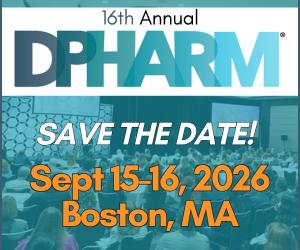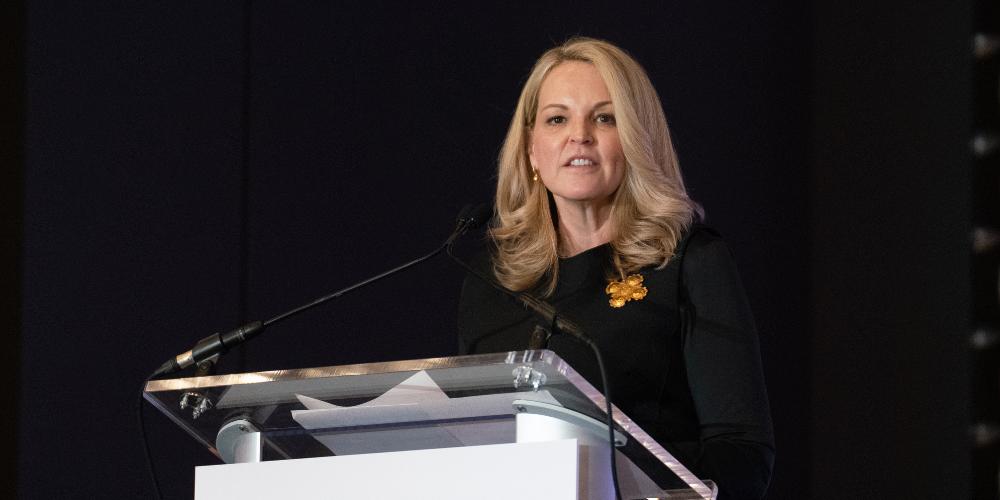Advancing Dementia Medicine Development Using Digital Health Tech Maturity and Patient-Centric Measures
Sarah Averill Lott, MPH, CPH, Research Lead, Digital Medicine Society (DiMe), tells us about a pre-competitive collaborative that gathered the most impactful measures directly from patients with dementia and identified mature digital technologies that sponsors can use.

What was the impetus of the collaborative focused on digital measures development in Alzheimer’s disease and related dementia?
Alzheimer’s disease and dementia are some of the hardest diseases to tackle in clinical research and clinical care, as these are not conditions we can currently cure, and the need is only growing. There are more than 50 million people getting a diagnosis currently and that will exponentially grow as the population increases and ages. There are exciting breakthroughs in therapy, but we’re still not where we need to be to reverse dementia or ensure good quality of life for those who receive a dementia diagnosis.
At the same time, technological advances have allowed us to be better at detecting signals and apply those understandings to the disease trajectory. Therefore, in early 2022, DiMe organized a pre-competitive collaboration that included product developers, digital health technology developers, pharmaceutical companies, clinical research scientists, healthcare providers who specialize in dementia and patient advocates.
What was the collaborative’s goal?
The goal was multifold. One was to advance the role of technology to identify biomarkers earlier, to better understand opportunities for intervention before progression sets in. There is a lot of innovation happening in different spaces, so we needed to come together to decide, “What can we measure meaningfully in Alzheimer’s disease and dementia more broadly?”
Another was to define a core set of measures that can be collected using the technology we have today. We want to see those implemented to drive research forward and use these technologies in a standard, consistent manner to be able to share learnings.
Finally, we also wanted to ensure that we were taking a truly patient-centric view and understanding what patients are experiencing. In this therapeutic area specifically, that’s incredibly important because when people have cognitive decline, they can’t always advocate for themselves in the same way as other patients.
"There are exciting breakthroughs in therapy, but we’re still not where we need to be to reverse dementia or ensure good quality of life for those who receive a dementia diagnosis."
What measures were solidified as a result of the project?
We ended up with four core digital measures: visuospatial memory, expressive communication, sleep disruption, and non-sedentary behavior.
We landed on those four by assessing the qualitative literature via a systematic literature review, followed by a global mixed-method study of 1,000 patients, care partners, and health care providers. We collected their experiences, or meaningful aspects of health, which were then evaluated by a crossdisciplinary panel of dementia experts,to help us understand the clinical significance of those results. Then, we narrowed that down even further by identifying which meaningful aspects of health could be captured with mature technologies . We considered “mature” to be anything commercially available, with evidence that lines up with the V3+ framework of analytical validity, clinical validity, technical verification and usability verification.
What measures came up that were significant to patients, but don’t have a mature technology that sponsors should know about?
One is mood disruption. In dementia, for example, agitation and depression can be very real experiences for folks. We can measure these things with digital health technologies, but we saw this as an emerging, rather than fully mature area for digital measurement; we wanted to see more validity work being done before we put that down as a core measure.
How does this change what drug developers have been doing already?
The hope is that by including these measures in their protocols we will start to get data that really captures the patient experience better, helps us better understand windows for intervention, and better shows whether or not a therapeutic is improving patients’ lives.
One thing we’ve heard from HCPs is that drug developers who are using a memory measure – digital or otherwise – will sometimes focus on a slight increase in patients being able to retain a few extra words as evidence that the drug is improving memory status.
Our question is, “Is it improving memory status in a way that is meaningful to the patient?” Would the patient feel as though they are communicating better or retaining memory longer, beyond any statistical difference.
"The hope is that by including these measures in their protocols we will start to get data that really captures the patient experience better, helps us better understand windows for intervention, and better shows whether or not a therapeutic is improving patients’ lives."
How does this better allow us to help patients?
Broadly, this offers us the chance to democratize access to clinical trials for dementia patients in a way that we’ve never been able to before. Getting technology into the homes of patients and being able to collect data there reduces the burden of them having to go to a site. It also means that you can deploy remotely in new ways.
The ability to capture more diverse, longitudinal data from larger groups of people across the dementia spectrum is huge. We’re also able to look beyond cognitive decline, which is of course a hallmark of dementia, but doesn’t necessarily capture the full experience. If we want to move the needle with therapeutics for dementia, we need data that creates a much more composite view of the disease. There are other things that can be measured using the landscape of technology we have, including mobility, fall risk, gait changes, sleep disruption, speech pattern changes, etc. Dementia has multiple downstream impacts and we can actually measure them, which allows us to be more targeted in what we’re trying to intervene.
What surprised you about the technology you identified in your assessments?
What struck me was how broad the space is and how much emphasis has been placed on low patient burden while also providing meaningful data. For example, technologies that are not incumbent on the person remembering to use or wear something every day.
Of course there are wearables, but we also found a lot of ambient or environmental sensors in our landscape review. This could be a bed with embedded ballistocardiography sensors, a floor with pressurized plates, cameras that detect movement in the home, etc. We are also seeing significant uptake in apps on smartphones and tablets designed for someone who is in early dementia that are useful for evaluating memory tasks or simulating a patient’s ability to navigate everyday life.
If sponsors wanted to begin using or considering these DHTs, what pre-planning and investment are required?
It does require an upfront investment to answer a few key questions. How are you getting consent from patients? Are you fully considering the potential experience for the patient, both in benefit and burden? How are you storing and/or sharing patient data, particularly such large volumes of data? How are you mitigating the risk of data being used inappropriately down the line? Are you doing due diligence to ensure your algorithms don’t have hidden bias? And are you using diverse, representative data to train your algorithms?
But, when you do that due diligence, you are engaging in cost-saving down the line, because you’re (a) potentially reducing your needed sample size and (b) getting more representative and comprehensive data that can increase the likelihood of regulatory approval.
I understand budget constraints but getting more sensitive, representative data and processing it well could generate new insights and save money in the long run.
You mentioned regulatory approval. What has been the attitude from regulators?
As an FDA collaborative community, we have regular engagement with folks at FDA who have been very supportive of our digital measures work. They are working with us to develop resources that help the industry build and use technologies that will align with FDA expectations in a responsible and more efficient way.
I have consistently heard from regulators that they want sponsors and study teams to talk to them early if you want to use or build a DHT for a clinical trial. The FDA also strongly values efforts to put the patient first, which is why for this project we gathered patient perspectives and built the core measures around those.
Anything else?
I want folks to see that we do have technologies that are mature and getting better every day. Using digital health technologies, we’re able to measure things like mobility, speech patterns, gait, language production, fine motor function, agitation, balance, etc, to paint a much fuller and less static image of dementia. Depending on what somebody's therapeutic is designed to target, chances are there was something in this list that overlapped there.









